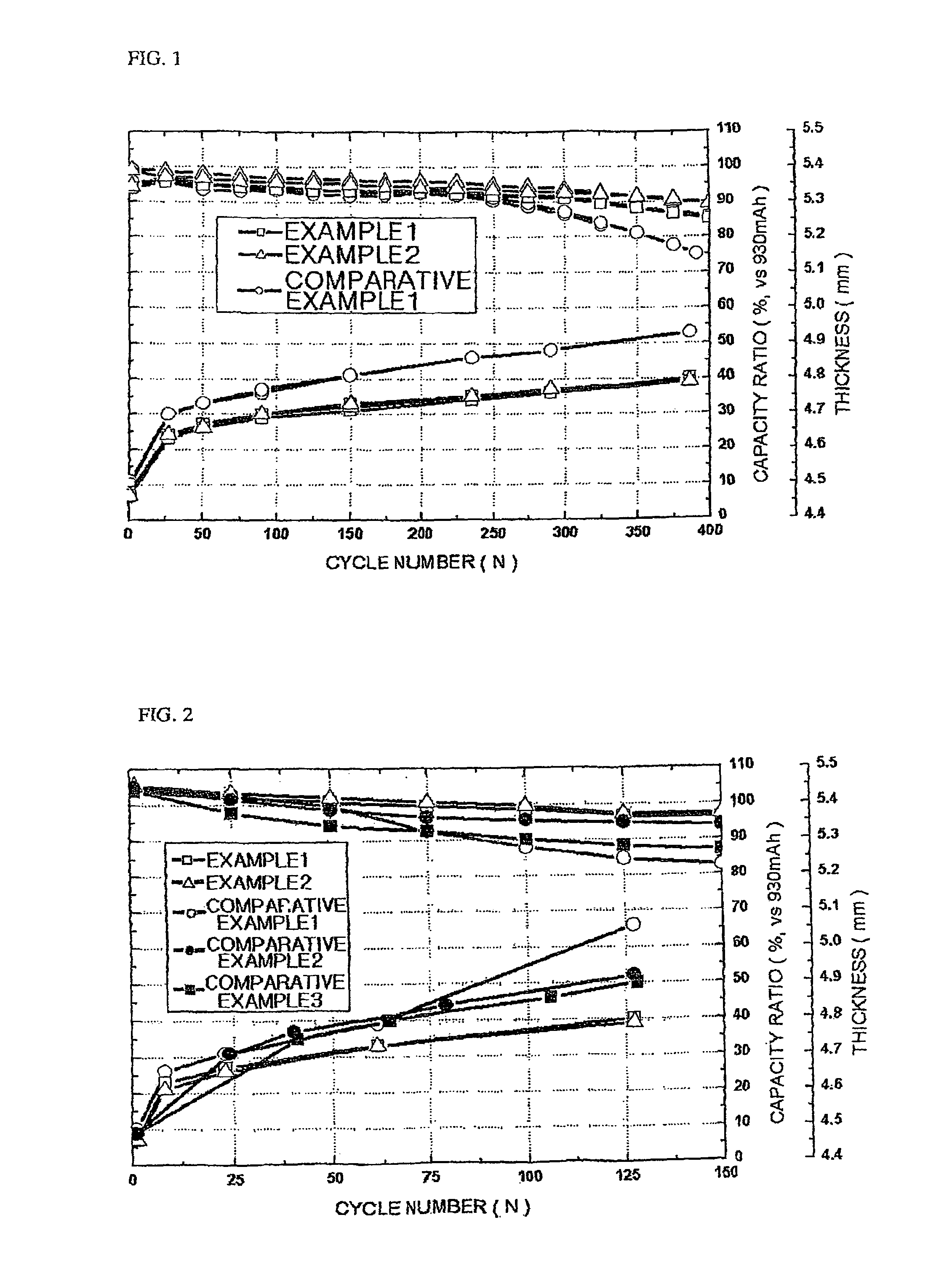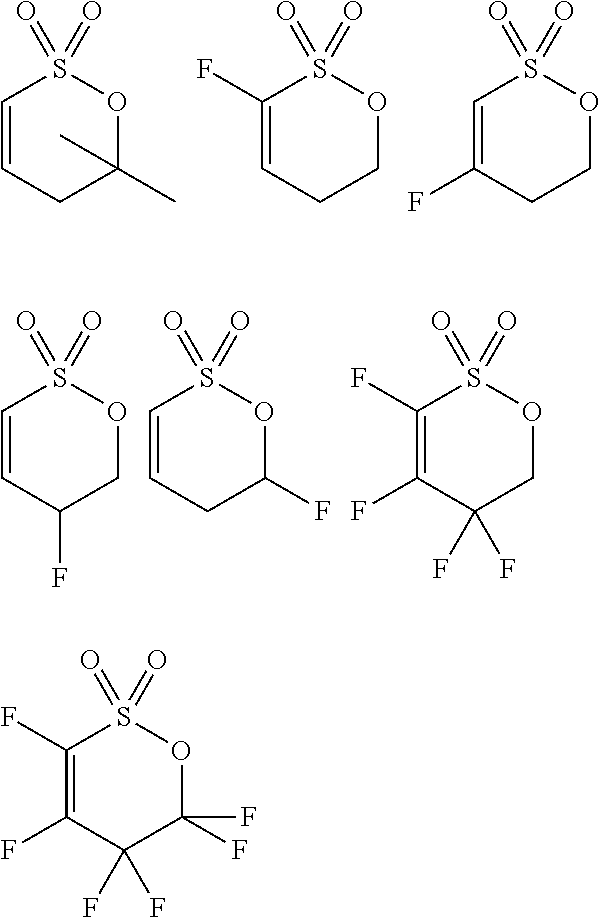Non-aqueous electrolyte solution for lithium secondary battery and lithium secondary battery having the same
a lithium secondary battery and non-aqueous electrolyte technology, which is applied in the direction of non-aqueous electrolyte cells, cell components, electrochemical generators, etc., can solve the problems of deteriorating life and performance, collapsing the anode structure, and damage to the battery stability
- Summary
- Abstract
- Description
- Claims
- Application Information
AI Technical Summary
Benefits of technology
Problems solved by technology
Method used
Image
Examples
example 1
[0046]LiPF6 was added to a solution in which ethylene carbonate (EC), diethyl carbonate (DEC) and propylene carbonate (PC) were mixed in a volume ratio of 2:7:1 to make a 1M LiPF6 solution. Then, 1 part by weight of 1,3-propene sultone (PRS), 1 part by weight of vinylethylene carbonate (VEC), 5.38 parts by weight of fluoroethylene carbonate (FEC) and 1 part by weight of succinonitrile (SN) were added based on 100 parts by weight of non-aqueous electrolyte, thereby preparing a non-aqueous electrolyte solution.
example 2
[0047]A non-aqueous electrolyte solution was prepared in the same way as in the Example 1, except that a 1:1 mixture of diethyl carbonate and ethylmethyl carbonate was used instead of diethyl carbonate.
PUM
| Property | Measurement | Unit |
|---|---|---|
| weight | aaaaa | aaaaa |
| overcharging stability | aaaaa | aaaaa |
| energy density | aaaaa | aaaaa |
Abstract
Description
Claims
Application Information
 Login to View More
Login to View More - R&D
- Intellectual Property
- Life Sciences
- Materials
- Tech Scout
- Unparalleled Data Quality
- Higher Quality Content
- 60% Fewer Hallucinations
Browse by: Latest US Patents, China's latest patents, Technical Efficacy Thesaurus, Application Domain, Technology Topic, Popular Technical Reports.
© 2025 PatSnap. All rights reserved.Legal|Privacy policy|Modern Slavery Act Transparency Statement|Sitemap|About US| Contact US: help@patsnap.com



